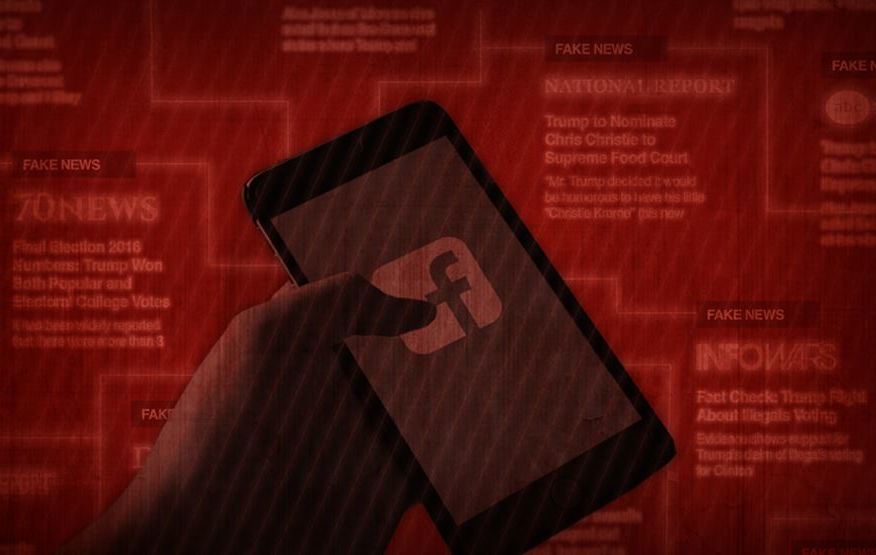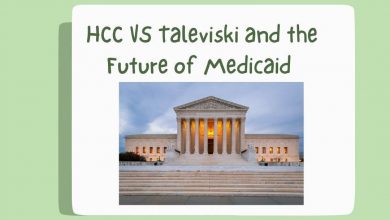The Value of Facts and Reality in a World That Doesn’t Seem to Care About Them

Graphic on fake news websites made by VOA News, from Wikimedia Commons
Over the past few months, news stories lacking substantiation have circulated the nation. Among the most infamous is “Pizzagate,” a conspiracy theory linking Hillary Clinton’s emails to a Washington, D.C. pizza restaurant that allegedly fronts for illicit activity. Though a story is just a story, it becomes a problem when people start blindly believing it and take it so far as to confront the implicated pizza restaurant with an assault rifle.
The fake-news epidemic has been a heated topic since the historic election last fall during which news sources that delivered blatantly false claims were seemingly influencing the minds of voters. The most terrifying aspect of this situation lies in the fact that even when repeatedly presented with verified evidence to the contrary, voters refused to change their minds or acknowledge this evidence at all.
The most common medium through which people received their news during the presidential election was cable news. While cable was by far the leading source by a 10 percentage point margin, social media and local TV trailed at 14% each, with news apps and websites close behind at 13%.
While those who lean towards cable news tend to be older, white self-identified Republicans, the most popular news source for younger voters is social media. Furthermore, social media can more or less be boiled down into just Facebook, which is the most widely used social media site for news by a 26 percentage point edge over their nearest competitor.
There already exists a large divide in political ideology which causes people to turn towards sources of news more attuned to their own points of view. Particularly in terms of cable news, the media has a polarizing effect on its audience that influences the way they perceive issues. The issue is that this creates a severe dichotomy in ideologies which causes people to turn to increasingly politically polarized sources, perpetuating a vicious cycle.
Websites like Facebook have made it increasingly easier to live within one’s own political realm with algorithms that contribute suggested articles to one’s news feed based on likes and interests. This issue multiplies when coupled with the fact that the dissemination of news on websites is not filtered and can distribute false claims. When ingested, reinforced, and shared by numerous people with similar mindsets, these claims can suddenly appear true. Because of the “social media bubble” effect, there is a disengagement with the other side of the argument, from both sides. If you and all your friends believe something to be true without encountering or entertaining opposing claims, does it then become true?
Presently, this epidemic of fake news has managed to work its way to the White House where the current President now continues to distribute outright false claims about inauguration attendance, weather, global warming, spending, policy, and more. How can we place our faith in an elected representative when we cannot even trust the information he is presenting to us? Now, the White House itself is participating in the legitimization of baseless claims in journalism by insisting that Breitbart, which is heavily discredited, be the main news source at press conferences. Another red flag is the complete reliance on Fox News as a source regardless of how true the story is.
Considering all of these circumstances, the key issues become:
1) How do we effectively disseminate fact-based news in a world where there are so many competing sources of false news?
2) How do we convince people to accept, or at the very least acknowledge, this news over other less credible sources?
3) How do we accomplish 1 and 2 without government cooperation?
Adjustments in Social Media
Though the degree to which the influence is highly contested, there is undeniable evidence of the role social media played in the circulation of information during the 2016 election cycle. Though companies have claimed neutrality on divisive issues, a lack of verification of news contributes to the problem. They should feel an obligation to reflect on their role and adjust accordingly by possibly using their data to only yield “historically true” sources in their results or implementing established methods of filtering news sites used by search engines. However, by retaining impartiality they can appeal to the most consumers and remain successful, thus blocking any change in policy. This is where the public comes in.
Though these companies may be large, they would be forced to readdress their business model with enough public pressure. Even if they would not be compelled to do so right off the bat because it is in their best interest to remain “impartial,” public opinion carries a high degree of influence with these businesses. For example, after commenting soon after the election that fake news did not have a heavy influence, Zuckerberg experienced a $3.7 billion fall in net worth prompting him to work on methods to filter fake news sites.
Regulation of Sources
Free press is inherently that – free – and so any proposed regulation will most likely be met with severe backlash. Given the current situation, it might be time to weigh the consequences of a lack of regulation with the potential costs.
The first concern is undoubtedly abuse of regulation and the fear that this will become censorship or propaganda. However, media today is not wholly unregulated and already abides by policies set by the FCC “to regulate interstate and foreign communications by wire and radio in the public interest.”
There is currently already regulation as to what can and cannot be on air, and the FCC does have the power to give licensing to these organizations and enforce their regulations. The issue is that the commissioners appointed to head the FCC are selected by the president and confirmed by the Senate, and both have proven to be unreliable in delivering accurate information.
At this point, it might be better to switch to public broadcasts such as NPR, which is currently one of the most trusted news sources in the nation, or support truthful, independent journalism. However there seems to be reports swirling that Trump is gearing up to slash NPR funding. Again, this is where we come in as the public to donate to such news sources to keep a supply of relatively unbiased reporting alive and well.
Engagement in Conversation
The last adjustment comes from us us well. The “post-fact” world that we are hurdling towards does not have to become a reality as long as we constantly expose ourselves to a variety of news sources by not only avoiding unreliable news channels, but also by entertaining different points of view from valid sources across the political spectrum. Websites like Allsides or Politifact can be used to not only receive news from left, right, and center sources, but also to analyze the validity and bias of individual sources. It is only through understanding “the other side” that we can begin to understand what caused such a divide in the first place, and then take measures to address it.
Above all, think as an individual rather than blindly accepting information presented. The ironic skepticism of true information created by this political campaign is reminiscent of propaganda tactics used in authoritarian states to question all information except that which comes directly from the leader, made worse in this case by the fact that it is being delivered by a misogynist refusing to accept any facts differing from his own opinion. The only way to combat this is to keep yourself individually informed from all sides to get the “whole” truth.




